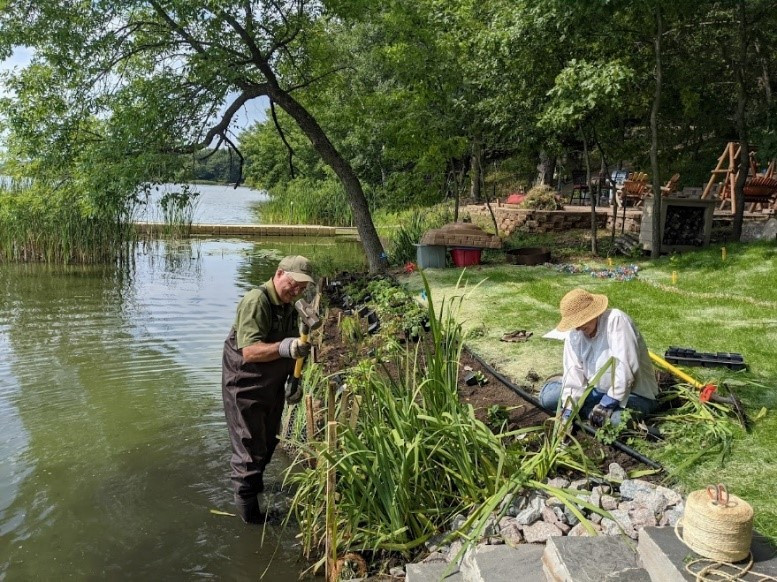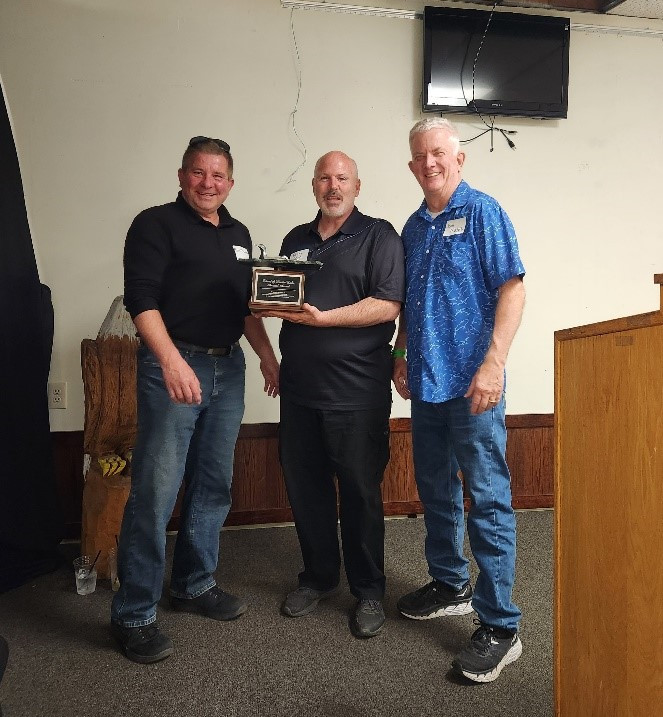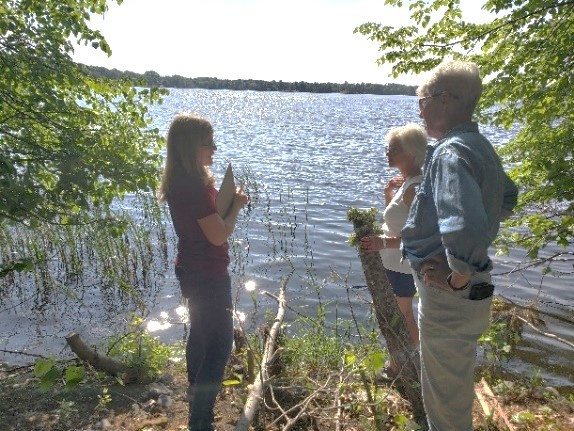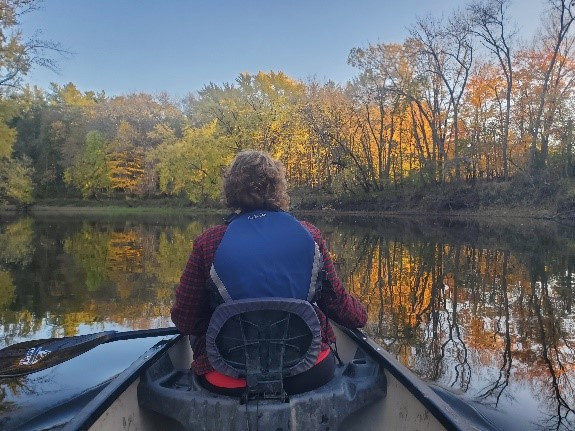ACD recently had several projects where the contractor used barges to stabilize shorelines that are otherwise be difficult to reach. It has allowed us to stabilize some of the highest priority shorelines and added efficiency to the work. Recent projects have been on Martin Lake and the Rum & Mississippi Rivers.
Small excavators work from the barge itself. The barge is moved up and down the shoreline. In this way the equipment is never driven in the water where it would disturb sediment and destroy aquatic vegetation. For more information contact Jamie Schurbon, Wetland Specialist, at




